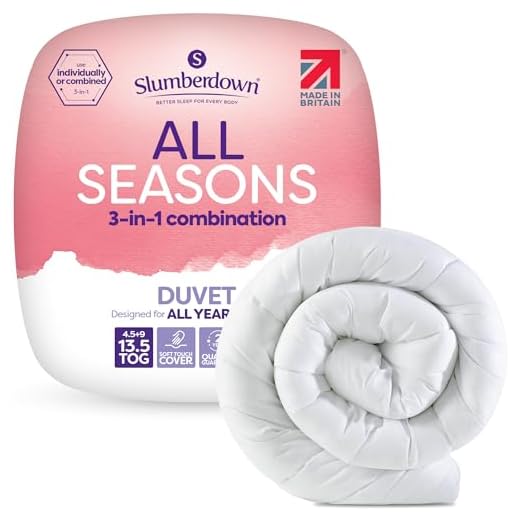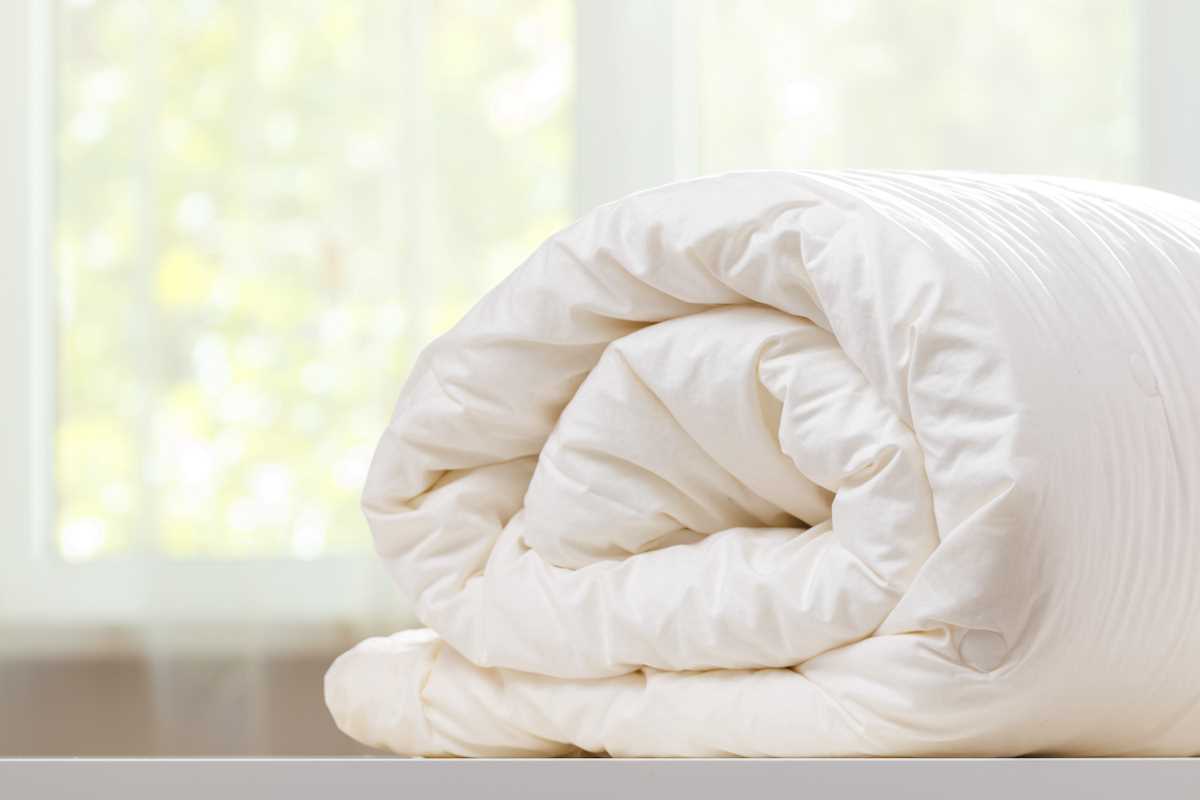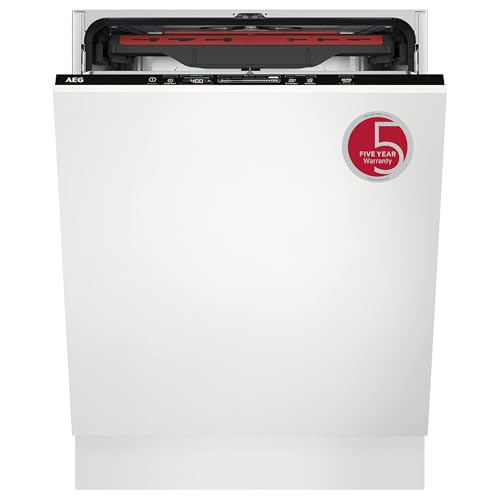




Tumble drying is a common method of drying clothes and other fabrics, but what about duvets?
A duvet is a type of bedding that consists of a soft, flat bag filled with feathers, down, or synthetic materials. It is used to keep warm while sleeping and is often covered with a duvet cover for protection.
Many people wonder if they can safely tumble dry their duvet, especially when it gets wet or needs a good fluffing. In this article, we will explore whether or not it is safe to tumble dry a duvet and what precautions you should take if you decide to do so.
Before attempting to tumble dry your duvet, it is important to read the care instructions provided by the manufacturer. Some duvets may be suitable for tumble drying, while others may require alternative methods of drying, such as air drying or professional cleaning.
If the care instructions allow for tumble drying, there are a few things to keep in mind. Firstly, make sure to check the capacity of your tumble dryer to ensure that it can accommodate the size and weight of your duvet. It is also recommended to use a low heat setting to prevent any damage to the duvet or its filling.
Understanding Duvet Care
Proper care of your duvet is important to ensure its longevity and effectiveness. Here are some key points to understand about duvet care:
- Read the Care Label: Before washing or drying your duvet, be sure to read the care label attached to it. This will provide you with specific instructions on how to clean and care for your duvet.
- Regular Cleaning: It is recommended to clean your duvet every 6 to 12 months, depending on your usage and personal preference. Regular cleaning helps to remove dust, dirt, and allergens, ensuring that your duvet remains fresh and hygienic.
- Washing: Most duvets can be machine washed, but it’s important to check the care label for any specific instructions. Use a gentle cycle and a mild detergent to ensure that the duvet is properly cleaned without causing any damage to the fabric.
- Drying: While some duvets can be tumble dried, others may require air drying. Again, refer to the care label for instructions. If tumble drying is allowed, use a low heat setting to prevent shrinking or damaging the duvet.
- Storage: Proper storage is essential to keep your duvet in good condition when not in use. Make sure your duvet is completely dry before storing it to prevent mold or mildew growth. Use a breathable storage bag or a cotton pillowcase to protect it from dust while allowing airflow.
- Professional Cleaning: If you are unsure about how to clean your duvet or if it requires special care, it is best to seek professional cleaning services. Professional cleaners have the expertise and equipment to effectively clean and maintain your duvet.
By following these guidelines and taking proper care of your duvet, you can enjoy its comfort and warmth for a long time.
What is a Duvet?
A duvet is a type of bedding that is used to keep warm during sleep. It consists of a soft, flat bag filled with down, feathers, wool, or a synthetic alternative. Duvets are often covered with a removable cover known as a duvet cover, which helps protect the duvet and can be easily washed.
A duvet is different from a comforter in that it is typically fluffier and lighter in weight. It is designed to be used without additional blankets or sheets, providing warmth and comfort on its own. Duvets are popular in European countries and are becoming more common in other parts of the world as well.
Types of Duvets:
- Down duvets: These duvets are filled with the soft feathers found beneath the outer feathers of ducks or geese. They are known for their exceptional warmth and insulation.
- Feather duvets: These duvets are made from a blend of feathers and down, providing a balance of warmth and affordability.
- Wool duvets: These duvets are filled with wool, which naturally regulates body temperature and wicks away moisture.
- Synthetic duvets: These duvets are filled with synthetic materials such as polyester. They are hypoallergenic and can be a good alternative for those with allergies.
Caring for a Duvet:
Proper care and maintenance are essential to keep a duvet in good condition:
- Regularly fluff and air out the duvet to maintain its loft and freshness.
- Use a duvet cover to protect the duvet from dirt, stains, and wear. The duvet cover can be easily removed and washed as needed.
- Follow the manufacturer’s instructions when washing the duvet. Some duvets can be machine washed, while others may require professional cleaning.
- When drying the duvet, it is generally recommended to air dry it or use a large capacity dryer on low heat. Avoid high heat settings, as they can damage the filling.
- Consider using a duvet storage bag when storing the duvet to protect it from dust, pests, and moisture.
By following these care tips, your duvet can last for many years and provide you with cozy comfort throughout the seasons.
Types of Duvets
When it comes to duvets, there are several types available on the market. Each type has its own unique features and benefits, so it’s important to choose the right one for your needs. Here are some common types of duvets:
1. Synthetic Duvets
- Synthetic duvets are made from man-made materials such as polyester or microfiber.
- They are often hypoallergenic and suitable for those with allergies or asthma.
- These duvets are machine washable and can be tumble dried, making them easy to care for.
- They are also lightweight and therefore great for warmer climates or summer use.
2. Feather and Down Duvets
- Feather and down duvets are filled with a mixture of feathers and down, with down being the soft, fluffy feathers found under the outer feathers of birds.
- They offer excellent insulation and are ideal for colder climates or winter use.
- These duvets are naturally breathable and help regulate body temperature, keeping you warm in winter and cool in summer.
- Feather and down duvets should be professionally cleaned and air-dried to maintain their quality.
3. Wool Duvets
- Wool duvets are filled with natural wool fibers, usually sourced from sheep.
- They are hypoallergenic, resistant to dust mites, and can help regulate body temperature.
- Wool duvets are durable and have moisture-wicking properties, keeping you dry and comfortable throughout the night.
- They can be machine washed on a gentle cycle and air-dried.
4. Silk Duvets
- Silk duvets are made from natural silk fibers.
- They are lightweight, breathable, and offer a luxurious feel.
- Silk duvets are hypoallergenic and great for those with sensitive skin or allergies.
- They require special care and should be dry cleaned or spot cleaned to maintain their quality.
When choosing a duvet, take into consideration your personal preferences, climate, and any specific allergy concerns. With the right duvet, you can enjoy a comfortable and restful night’s sleep.
Can You Tumble Dry a Duvet?

When it comes to washing your duvet, you may be wondering if it is safe to tumble dry it. Tumble drying can be a convenient way to dry your duvet quickly, but not all duvets are suitable for this method. Here are some factors to consider when deciding whether or not to tumble dry your duvet.
The Type of Duvet
The first thing to consider is the type of duvet you have. Some duvets, such as those made of down or feathers, can be damaged by the high heat of a tumble dryer. These types of duvets are better suited for air drying or professional cleaning.
On the other hand, synthetic duvets, such as those made of polyester or microfiber, are more durable and can withstand the heat of a tumble dryer. These duvets can be safely tumble dried on a low heat setting.
Size and Capacity
Another factor to consider is the size and capacity of your tumble dryer. If your duvet is too large or your dryer is too small, the duvet may not dry evenly or may get tangled and twisted during the drying process. This can result in a lumpy or misshapen duvet.
It is important to check the capacity of your dryer and ensure that there is enough space for the duvet to move around freely. If your duvet is too big for your dryer, it may be best to air dry it or take it to a laundromat with larger machines.
Proper Care Instructions

Always check the care instructions that came with your duvet. The manufacturer will provide guidelines on how to wash and dry the duvet safely. Some duvets may specify that they should not be tumble dried at all, while others may provide specific instructions on the heat and duration of the tumble drying process.
It is important to follow these instructions to ensure that your duvet stays in good condition and does not get damaged during the drying process.
Conclusion
In conclusion, whether or not you can tumble dry your duvet depends on the type of duvet you have, the size and capacity of your tumble dryer, and the care instructions provided by the manufacturer. It is important to assess these factors before deciding on the best drying method for your duvet.
If in doubt, it is always safer to air dry your duvet or seek professional cleaning to ensure that it remains in good condition and lasts for a long time.
How to Tumble Dry a Duvet Safely
Tumble drying a duvet can be a convenient way to quickly dry it after washing. However, it’s important to follow some safety guidelines to ensure that your duvet comes out clean and undamaged. Here are some steps to safely tumble dry a duvet:
- Select the right duvet size. Before attempting to tumble dry your duvet, make sure you have a tumble dryer that is large enough to accommodate the duvet. If your duvet is too large for the tumble dryer, it may not dry properly and could become damaged.
- Check the care label. Read the care label on your duvet to see if it is safe to tumble dry. Some duvets may have specific care instructions that suggest air drying instead of tumble drying. If the care label advises against tumble drying, it’s best to follow those instructions to prevent any damage to your duvet.
- Prepare the duvet. Before placing your duvet in the tumble dryer, make sure it is clean and free of any excess water. If there are any stains on the duvet, treat them before drying to prevent them from setting in during the drying process.
- Use low heat. Set your tumble dryer to a low heat setting to prevent overheating and potential damage to your duvet. High heat can cause the duvet to shrink or become misshapen. It’s better to dry the duvet slowly on a lower heat setting to ensure it stays in good condition.
- Add dryer balls or tennis balls. To help fluff up your duvet while it dries, consider adding dryer balls or clean tennis balls to the dryer. These can help prevent clumping and ensure that the filling inside the duvet is evenly distributed.
- Check periodically. While the duvet is drying, check on it periodically to make sure it is drying evenly and not overheating. If you notice any uneven drying or overheating, adjust the heat setting or remove the duvet from the dryer until it cools down.
- Give it a final air dry. Once the duvet is mostly dry, consider giving it a final air dry to ensure that it is completely dry. Hanging it up outside or placing it on a drying rack can help remove any lingering moisture.
By following these steps, you can safely tumble dry your duvet and have it ready to use again in no time. Just remember to always check the care label and use a low heat setting to prevent any damage to your duvet.
Tips for Duvet Care
Proper care for your duvet can help prolong its lifespan and ensure that it remains clean, soft, and comfortable. Here are some tips to help you care for your duvet:
1. Read the Care Label
Before washing your duvet, always check the care label for specific instructions from the manufacturer. Some duvets may require specific cleaning methods or have restrictions on washing or drying.
2. Regularly Air Out
Airing out your duvet regularly helps to remove any moisture and keeps it smelling fresh. Hang your duvet outside on a sunny day or prop it up near an open window to allow it to breathe.
3. Use a Duvet Cover
Investing in a duvet cover is a wise choice as it protects the duvet from stains, spills, and sweat. The duvet cover can be easily removed and washed, while the duvet itself stays clean and fresh.
4. Spot Clean Stains
If your duvet gets stained, it’s best to spot clean the affected area immediately. Use a mild detergent and a clean cloth or sponge to gently dab at the stain. Avoid harsh chemicals or scrubbing vigorously, as this can damage the duvet fabric.
5. Wash with Care
When it’s time to wash your duvet, follow the care label instructions. Use a gentle cycle with a mild detergent. Avoid using bleach or fabric softeners, as they can strip the natural oils from the down or synthetic filling.
6. Dry Thoroughly
If your duvet can be tumble dried, make sure to dry it thoroughly to prevent the growth of mold or mildew. Use a low heat setting and add some dryer balls or clean tennis balls to help fluff up the duvet as it dries.
7. Store Properly
When storing your duvet, make sure it is clean and completely dry. Store it in a breathable cotton or linen bag to prevent dust and moisture buildup. Avoid storing it in plastic bags or airtight containers, as this can lead to musty odors.
By following these tips, you can ensure that your duvet remains clean, fresh, and comfortable for years to come.
FAQ
Is it safe to tumble dry a duvet?
Yes, it is generally safe to tumble dry a duvet. However, you should check the care label on your duvet to ensure that it can be tumble dried. Some duvets may require special care or may not be suitable for tumble drying.
What temperature should I set when tumble drying a duvet?
The temperature setting for tumble drying a duvet will depend on the material and filling of the duvet. It is recommended to use a low or medium heat setting to avoid damaging the duvet. Always refer to the care instructions provided by the manufacturer for the specific temperature setting.
Can I tumble dry a feather duvet?
Yes, you can tumble dry a feather duvet. However, it is important to use a low heat setting and add a few clean tennis balls or dryer balls to help fluff the feathers and prevent clumping. This will ensure that the feathers are evenly distributed and the duvet remains soft and fluffy.
Is it better to air dry or tumble dry a duvet?
It is generally recommended to air dry a duvet if possible, especially if it is made of delicate materials or has a sensitive filling. Air drying helps to preserve the quality and longevity of the duvet. However, if you choose to tumble dry, make sure to follow the care instructions and use a low heat setting to prevent any damage.
How long does it take to tumble dry a duvet?
The time it takes to tumble dry a duvet will vary depending on factors such as the type of duvet, its size, and the heat setting used. On average, it can take anywhere from 1 to 3 hours to fully dry a duvet in a tumble dryer. However, it is important to regularly check the duvet during the drying process and adjust the time accordingly to avoid overheating or under-drying.
Can I put my duvet in the tumble dryer?
Yes, you can put your duvet in the tumble dryer. However, you need to make sure that it is suitable for machine drying.














